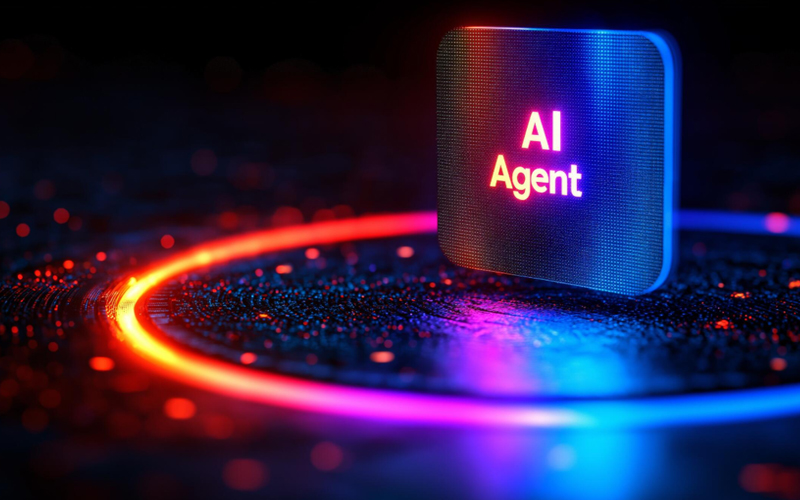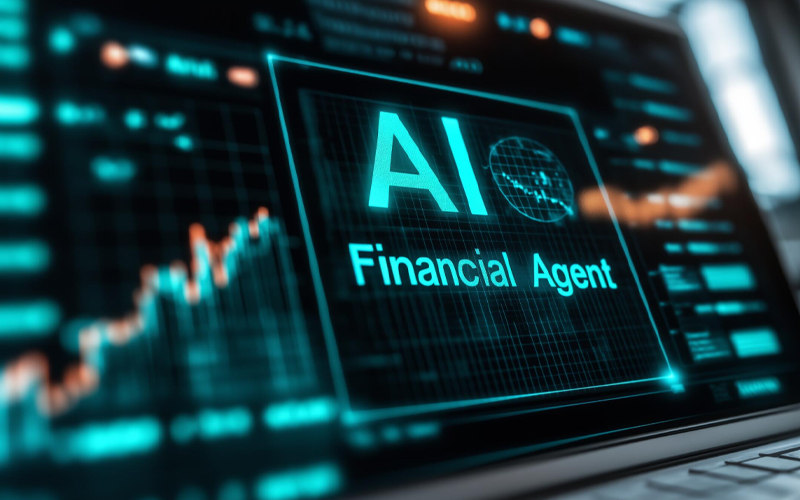Today’s customers expect digital platforms to be seamless, intuitive, and adaptive. A single poorly designed interface can drive users away, while a personalised, intelligent experience strengthens loyalty and fuels growth, making the convergence of AI and UI design a strategic differentiator.
why AI UI design is a boardroom imperative
Digital experience directly impacts revenue and retention. Nearly one-third of customers abandon a brand they like after just one poor interaction. In response to these high stakes, AI’s role has matured. What began with chatbots and autocomplete has evolved into adaptive systems that generate UI elements, anticipate needs, and adjust experiences in real time. By 2026, task-specific AI agents are projected to power a large share of enterprise applications, up from single-digit adoption today. This makes AI user interface design not a technical experiment but a boardroom priority.
transforming AI and user interface into strategic business assets
The real question is not “what can AI do for UI?” but “how does AI UI design create enterprise value?” Leading organisations are already showing the way:
- Retailers are using AI to redesign product pages in real time, tailoring recommendations for each shopper.
- Banks are testing interfaces that adapt to customer behaviour. For example, simplifying navigation for first-time users while surfacing advanced features for power users.
- Healthcare providers are embedding AI-driven accessibility features, making patient portals more inclusive for visually impaired or elderly patients. The benefits extend across growth, efficiency, and resilience:
- Personalisation at scale: Interfaces adapt instantly, offering recommendations and content tuned to each user. Personalisation consistently generates outsized revenue from these activities.
- Faster time to market: AI-driven prototyping compresses design cycles from weeks to hours, accelerating launches and reducing costs.
- Accessibility and inclusion: Adaptive UIs automatically adjust to accessibility needs, broadening reach and strengthening ESG commitments.
- Operational efficiency: Predictive design and automated testing lower rework rates, smoothing rollouts and reducing long-term costs.
risks and mitigation: leading responsibly
While the potential is compelling, risks must be addressed:
 Bias and fairness: AI interfaces may reinforce bias if unchecked. Ongoing audits and diverse training data are essential.
Bias and fairness: AI interfaces may reinforce bias if unchecked. Ongoing audits and diverse training data are essential.
 Over-automation - Too much automation risks impersonal experiences. A hybrid Humanae oversight model balances efficiency with empathy.
Over-automation - Too much automation risks impersonal experiences. A hybrid Humanae oversight model balances efficiency with empathy.
 Data privacy and regulation - With tightening global privacy rules, embedding compliance into design workflows is now non-negotiable.
Data privacy and regulation - With tightening global privacy rules, embedding compliance into design workflows is now non-negotiable.
Managing risks proactively protects the enterprise and strengthens trust with customers and regulators.
leadership and culture: the human side of AI UI
Technology is only half the story. Success depends on the ability to foster alignment across teams:
- Cross-functional collaboration: Designers, engineers, data scientists, and compliance leaders must work together from the start.
- Empowering designers: AI should free designers from repetitive tasks, enabling them to focus on creativity and strategy.
- Culture of experimentation: Iterative pilots, rapid testing, and scaling successful models are essential to adoption.
Without cultural readiness, even the best AI tools underperform.
from experimentation to advantage
AI UI adoption can be strategically phased:
- Phase 1: Experimentation: Use AI-generated UI tools for prototyping and backlog reduction.
- Phase 2: Optimisation: Scale AI UI across touchpoints to deepen engagement and retention.
- Phase 3: Transformation: Embed adaptive interfaces as a signature enterprise strength.
This roadmap delivers quick wins while building toward sustained advantage.
why enterprise integration is critical
The real power of AI UI emerges when it is integrated into enterprise systems aligning customer data platforms, analytics engines, and automation layers. Without this, AI UI risks being cosmetic rather than transformative.
This is where transformation partners like Infosys BPM play a pivotal role. By connecting design intelligence with business processes and data ecosystems, Infosys BPM helps enterprises move beyond experimentation to scale. The result: AI UI investments that don’t just enhance interfaces but elevate enterprise-wide performance.
future horizons: where AI UI is headed
The next frontier of AI UI design will extend beyond screens. Generative AI is already enabling voice-first, multimodal, and spatial interfaces, where customers interact naturally across devices, augmented reality layers, and even physical spaces.
Imagine a retail store where digital signage adapts instantly to shopper demographics, or a logistics dashboard that redesigns itself depending on whether a manager is in the warehouse or the boardroom.
The competitive edge lies in preparing not just for today’s intelligent interfaces, but for tomorrow’s adaptive, immersive, and context-aware experiences.
closing thoughts
AI UI design is a strategic lever for efficiency, cost reduction, and differentiation in a saturated market. Treat AI and UI as core business assets: aligning them with enterprise priorities, embedding responsible practices, and empowering teams to innovate with confidence. By preparing for the next wave of intelligent experiences, organisations can capture not only growth but enduring customer loyalty.







